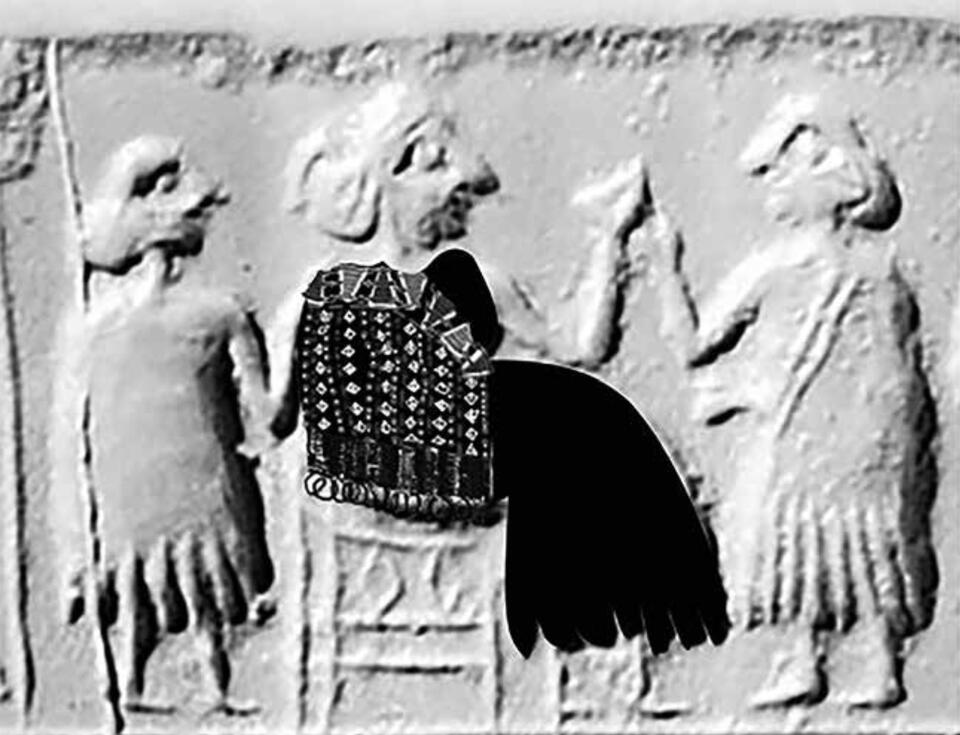"The reconstruction of Puabi fully adorned provides insights into the fabric that lay beneath the sumptuous ornaments. The queen’s spectacular accessories, though important, have diverted our attention away from the cloth that lay beneath the eye-catching ornaments, which deteriorated (or de-materialized) long ago and so has been mostly invisible to us in the present day. My attempts in this paper have been to gather together the various threads that pertain to the production and use of cloth in order to complete a narrative of (and to re-materialize missing elements from) Puabi’s signature funerary performance," writes Dr. Rita P. Wright (p. 265). Focusing on the textile evidence from ancient Mesopotamia, which is far better attested to in cuneiform sources than anything from the ancient Indus valley, she manages to carefully offer theories of what Queen Puabi might have been wearing in seals and at her burial. In the process she shows how cloth, especially in the difference between linen from flax and cotton garments, was not only an important economic activity in ancient Mesopotamia, but also a mark of status between elites and regular inhabitants.
While none of this analysis is directly applicable to ancient Indus society, it does show how complex textile cultures could be – given that Indus textile weavers were found in the village of Guabba, in southern Mesopotamia, around the same time, we can expect an at least similarly rich role of textiles in Indus civilization. Furthermore, the rich descriptions of how cities interacted, with their own gods and shared ideologies, make one ponder whether anything similar took place in ancient Indus cities: "Recorded in the archive are extensive travels that queens undertook to major cities and the countryside, where they participated in rituals and royal ideologies that were among the integrative strategies designed to unite the city states into a symbolic system. The symbolism extended the court’s royal status and kinship to local elites and lower ranking persons. Scott Beld (2002) refers to these arrangements as a ritual economy. The grave of Puabi, though earlier than the Lagash texts, brings together a rich material culture relevant to the development of these early Mesopotamian ideologies," (p. 268).
Dr. Wright adds as an introduction to this article: "The attached article, What Lay Beneath, focusses on the garments worn by Queen Puabi and a rare glimpse of the role of queens in cultic rituals in Mesopotamia in Early Dynastic IIIa (2400-2350 BCE) in the city of Ur. Figure 9.4, published with permission from the British Museum, illustrates some of the details of the cloth beneath the well-known ornaments that Puabi wore. Figures 9.5 – 9.8 were modelled after the lapis sealing and drawn by myself and Guilia Gallo. The paper also brings together studies of gendered labor organization and production of textiles as a window into status and role of women in history and in a society contemporary with the Indus civilization. Using textual sources from Mesopotamia, I also discuss the cultivation and processing of linen for textiles and differences in the technical features between wool and linen."
Image: Visualization of Puabi’s Clothing Modeled after Figure 9.4. Black Dress and “Cut-Off” with Appliquéd Ornaments. Created by R. Wright and G. Gallo.

